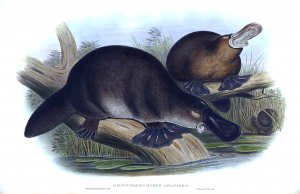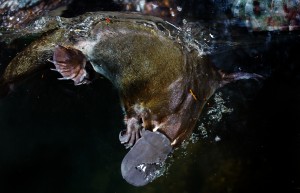As August 30 is Frankenstein Day, we thought of an animal that checks all the boxes for being unorthodox and nature’s most unique specimen – the platypus (Ornithorhynchus anatinus).

The platypus is a monotreme and one of the two that are only found in Australia, the other being the short-beaked echidna. The platypus has water-repellent fur, webbed feet and a leathery bill similar to a duck’s. They are difficult to observe in the wild because of their aquatic and nocturnal nature. Platypuses hunt underwater and are bottom feeders. Hence, one of their biggest threats is pollution and rubbish clogging the waterways especially in urban areas.
According to Australia Zoo Wildlife Hospital veterinarian Dr. Claude Lacasse, wildlife rehabilitators in Australia require a specialized permit with appropriate training and facilities to rehabilitate platypus. Because they are heat-sensitive and have a low body temperature, they do not thrive in temperatures higher than 30°C/86°F.
Platypuses can get very stressed in care because of their shy nature. They tend to expend their energy looking for means to escape in captivity. A quiet and stress-free environment with minimal disturbances is needed to ensure they do not experience complications from stress. Platypuses do not bite as they have no teeth, but adult males have venomous spurs on their hind legs, which can cause severe pain in humans that even powerful pain relief medications cannot alleviate. However, infant and juvenile platypus are generally easier to handle and can be managed similarly to other mammal species.

According to Dr. Paul Eden, senior veterinarian at Healesville Sanctuary in Zoos Victoria, platypuses can be picky eaters as they rely on their ability to sense electrical activities from their food items in order to locate food. Water access is provided to platypuses in rehabilitation for them to perform their natural behaviors of swimming and food foraging. This also aids them to groom and maintain the health of their coat themselves.
Dr. Lacasse points out that Australia Zoo Wildlife Hospital usually receives only 4-5 platypuses in a year, mostly when the young disperse from their maternal burrows and hunt by themselves. The hospital rehabilitates young platypuses that become anemic and weak because of ticks. According to Dr. Lacasse, sometimes the platypuses are too far gone for rehabilitation, but anti-parasitics, vitamins and good nutrition strengthens them enough to be released eventually. In Healesville Sanctuary, an average of 2-4 platypuses are rehabilitated because they often get entangled in discarded fishing lines and nets and elastic bands, according to Dr. Eden. These items can restrict their movements, preventing them from feeding and causing infected wounds.
Although the platypus is not an endangered species, wildlife experts are concerned that their populations are waning due to habitat destruction and illegal trapping. Run off of fertilizers and pesticides into waterways can affect invertebrate organisms living in creeks and dams, which in turn affects the platypus because these are important food items. Changes in flood patterns can cause erosion to river banks and sometimes flooding burrows, affecting the waterways. Also, entanglement in litter is an issue for platypuses that live in urban waterways. According to Dr. Eden, Zoos Victoria encourages people who fish to discard unwanted fishing lines by installing bins along popular fishing spots. Waste items such as rubber bands and plastic bottle rings should also be cut through to prevent animal trappings.
For more information on platypus ecology and conservation, read this informational guide by the Australian Platypus Conservancy.

Leave a Reply
You must be logged in to post a comment.